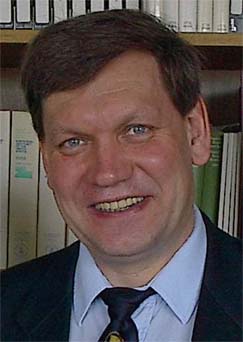'Longevity' Lecture at Duke university
We wonder whether some readers of this blog work at Duke university or nearby? We will be giving invited lecture there:
http://ipl.econ.duke.edu/seminars/node/3675
Would be glad to meet in person with those who are interested. Feel free to e-mail us, if you like to talk to us after presentation.
Kind regards,
-- Leonid and Natalia
-------------------------------------------------
-- Leonid Gavrilov, Ph.D., GSA Fellow
-- Natalia Gavrilova, Ph.D., GSA Fellow
Center on Aging, NORC at the University of Chicago
Website: http://longevity-science.org/
Blog: http://longevity-science.blogspot.com/
==========================
Duke University Population Research Institute (DuPRI) Seminar, Thursday, September 27, 3:30 PM to 5:00 PM, 111 Social Sciences Building
New Estimates of Mortality Trajectories at Extreme Old Ages
Leonid A. Gavrilov and Natalia S. Gavrilova, Center on Aging, NORC at the University of Chicago
Abstract
A growing number of persons living beyond age 85 underscore the need for accurate measurement and modeling of mortality at advanced ages. This is also very important issue for making correct forecasts of population aging and related demands for medical services and social support. Earlier studies indicate that exponential growth of mortality with age (Gompertz law) is followed by a period of mortality deceleration with slower rate of growth. This study challenges earlier conclusions with new datasets and data analysis.
In this study we used U.S. cohort survival data for people born in the same calendar year. For this purpose we obtained data from the U.S. Social Security Administration Death Master File to estimate hazard rates for 15 single-year extinct birth cohorts born in 1881-1895. We found that mortality deceleration is far less pronounced when it is measured for shorter monthly age intervals rather than for traditional annual intervals. To find out why does it happen we have made a simulation study and found that traditional measures of hazard rate (like the Nelson-Aalen hazard rate estimate) underestimate mortality force at extreme old ages (underestimation bias) when death rates are exceptionally high.
We also found that mortality deceleration is far less pronounced when datasets with higher data quality (age reporting) are analyzed. Mortality modeling found that the Gompertz model demonstrates better goodness-of-fit in age interval 88-106 years compared to logistic (Kannisto) model when used for data of good quality. Study of mortality among other mammalian species (mice and rats) also found no mortality deceleration at advanced ages. It appears that the earlier reports of mortality deceleration for ages below 106 years may be a result of age exaggeration and the use of biased estimates of hazard rate. This study was supported in part by the National Institute on Aging (R01 AG028620 grant).
For more information on this study see our recent peer-reviewed article:
Gavrilov L.A., Gavrilova N.S. Mortality measurement at advanced ages: A study of the Social Security Administration Death Master File. North American Actuarial Journal, 2011, 15(3): 432-447.
Full text available at:
http://longevity-science.org/pdf/Mortality-NAAJ-2011.pdf
and
http://www.ncbi.nlm.nih.gov/pmc/articles/PMC3354762/
You can see media coverage and discussion of our new study by clicking on these titles: Chicago Sun-Times, Chronicle of Higher Education, Daily Herald, Discovery News, Reuters, Scripps Howard News, U.S. News & World Report, United Press International (UPI), Wall Street Journal, and Wall Street Journal Blog, or see the summary of media coverage here.
=================================
Home:
Longevity Science Blog
and
'Longevity' Lecture at Duke university
Shorter weblink:
http://tinyurl.com/Duke-Lecture
.
Labels: aging, Duke university, DuPRI, Gompertz law, Leonid Gavrilov, longevity, mortality, Natalia Gavrilova, National Institute on Aging, North American Actuarial Journal, Old Age, Social Security Administration, US


